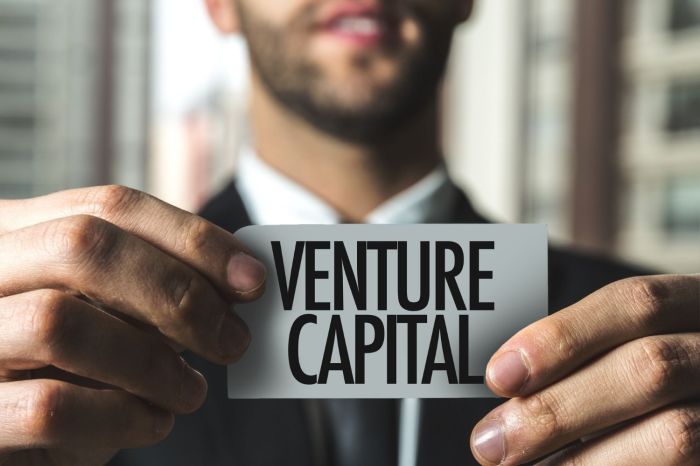VC fundraising is the process of securing capital from venture capitalists to fuel a startup’s growth. It’s a crucial step for any ambitious company seeking to scale and disrupt industries. But navigating the complex world of VC fundraising can feel like a daunting task, especially for first-time entrepreneurs.
This guide will break down the key stages of VC fundraising, from understanding the different funding rounds to building a compelling pitch deck that attracts investors. We’ll explore the essential metrics VCs consider, analyze the trends shaping the VC landscape, and delve into post-funding strategies for maximizing your success.
Understanding VC Fundraising
Venture capital (VC) fundraising is the process of securing investment from venture capitalists to fuel a startup’s growth. It’s a crucial step for many startups, as it provides access to the capital needed to scale operations, hire talent, and develop new products or services.
Stages of VC Fundraising
The stages of VC fundraising are typically categorized by the maturity of the startup and the corresponding investment needs. Each stage represents a distinct milestone in a startup’s journey and attracts different types of investors.
- Seed Stage: This initial stage focuses on validating the startup’s idea and building a minimum viable product (MVP). Seed funding typically ranges from $100,000 to $2 million, often provided by angel investors, seed-stage VC funds, and accelerators.
- Series A: This stage marks a significant milestone, as the startup has proven its product-market fit and is ready to scale its operations. Series A funding typically ranges from $2 million to $15 million, often provided by venture capital firms.
- Series B: This stage focuses on expanding the startup’s market share, building a strong team, and further developing its product or service. Series B funding typically ranges from $10 million to $50 million, often provided by growth-stage VC firms.
- Series C and Beyond: These later stages are typically reserved for established startups with significant revenue and a proven track record. Series C funding and subsequent rounds are often used for expansion, acquisitions, and potentially preparing for an IPO.
Common VC Fundraising Terms
VC fundraising involves specific terminology that helps define the terms of the investment. Understanding these terms is crucial for startups to navigate the fundraising process effectively.
- Term Sheet: A document outlining the key terms of the investment, including the amount of funding, valuation, equity stake, and other conditions.
- Valuation: The estimated market value of the startup, which is a crucial factor in determining the equity stake that investors will receive.
- Equity: Ownership shares in the startup, which are granted to investors in exchange for their investment.
- Pre-Money Valuation: The value of the startup before the investment is made.
- Post-Money Valuation: The value of the startup after the investment is made.
Choosing a VC Fund
Selecting the right VC fund is a critical decision for startups, as the fund’s experience, investment philosophy, and network can significantly impact the startup’s success.
- Investment Focus: Startups should choose a VC fund that specializes in their industry and stage of development.
- Track Record: It’s essential to assess the fund’s past performance and the success rate of its portfolio companies.
- Network and Resources: A VC fund with a strong network of industry contacts and resources can provide valuable support to startups.
- Culture and Values: Startups should choose a VC fund that aligns with their values and culture, as a strong relationship with investors is crucial for long-term success.
The VC Fundraising Process
VC fundraising is a crucial step for startups seeking to secure the capital needed for growth and expansion. It involves a series of strategic steps, from initial outreach to securing investment commitments. Understanding the process and mastering the art of pitching are key to attracting investors and securing the funding necessary to propel your business forward.
Identifying Potential Investors
Identifying potential investors is the first step in the VC fundraising process. This involves researching and understanding the investment criteria and areas of focus of various venture capital firms.
- Start by identifying VC firms that have invested in companies similar to yours. Research their portfolio companies, investment strategies, and track record.
- Attend industry events, conferences, and networking gatherings to connect with investors and learn about their interests.
- Utilize online platforms and databases like Crunchbase and AngelList to find relevant investors.
Crafting a Compelling Pitch Deck
A compelling pitch deck is essential for capturing the attention of potential investors. It should be a concise and visually appealing presentation that effectively communicates your business idea, market opportunity, and growth strategy.
- Start with a clear and concise problem statement, outlining the challenge your business addresses.
- Present your solution and explain how your business uniquely solves the problem.
- Showcase your market opportunity and target audience, highlighting the potential for growth and scalability.
- Present your team, emphasizing their experience, expertise, and passion for the business.
- Artikel your financial projections and revenue model, demonstrating the potential for strong returns on investment.
- Conclude with a clear call to action, outlining the investment opportunity and the desired outcome of the meeting.
Securing Initial Meetings
Once you have identified potential investors, the next step is to secure initial meetings. This can be achieved through a combination of direct outreach, introductions, and networking.
- Send personalized emails to investors, introducing your business and highlighting your value proposition.
- Leverage your network of contacts to obtain introductions to relevant investors.
- Attend industry events and conferences to network with investors and pitch your business.
Pitching to Investors
Pitching to investors is a critical stage in the fundraising process. It requires a clear, concise, and persuasive presentation that effectively communicates your business value proposition.
- Practice your pitch beforehand and rehearse it multiple times to ensure a smooth and confident delivery.
- Engage with investors by asking questions and seeking their feedback.
- Be prepared to answer questions about your business, market, team, and financial projections.
- Be transparent and honest about your challenges and limitations.
Negotiating the Term Sheet
If an investor expresses interest in investing, the next step is to negotiate the term sheet. This document Artikels the terms of the investment, including the amount of funding, valuation, ownership stake, and other key terms.
- Negotiate the terms carefully, ensuring that they are favorable to your business.
- Seek legal counsel and financial advisors to ensure that the term sheet is fair and protects your interests.
Closing the Deal
Once the term sheet is finalized, the final step is to close the deal. This involves signing the legal documents and receiving the investment funds.
- Work with your legal counsel to review and finalize the legal documents.
- Secure the necessary approvals from your board of directors and other stakeholders.
- Receive the investment funds and use them to grow your business.
Role of Legal Counsel and Financial Advisors
Legal counsel and financial advisors play a crucial role in VC fundraising. They provide expert guidance on legal and financial matters, ensuring that the process is conducted fairly and transparently.
- Legal counsel reviews and negotiates the term sheet, ensuring that the terms are favorable to the business and comply with all applicable laws and regulations.
- Financial advisors provide financial modeling and analysis, helping to determine the valuation of the business and the appropriate amount of funding to seek.
Key Metrics and Data
Venture capitalists (VCs) rely on a range of key metrics and data to evaluate potential investments. These metrics provide insights into a startup’s financial health, growth potential, and competitive landscape. Understanding these metrics is crucial for startups seeking VC funding.
Key Financial Metrics
VCs use several financial metrics to assess a startup’s performance and potential. These metrics provide a quantitative framework for evaluating a company’s financial health, growth trajectory, and overall value proposition.
- Revenue Growth: VCs look for companies with strong and consistent revenue growth, indicating a solid market demand and product-market fit. They often analyze revenue growth rates over different periods, such as year-over-year or quarter-over-quarter growth.
- Customer Acquisition Cost (CAC): This metric measures the cost of acquiring a new customer. VCs seek companies with a low CAC, indicating efficient customer acquisition strategies. A low CAC suggests a scalable business model with a strong customer acquisition engine.
- Customer Lifetime Value (CLTV): CLTV represents the total revenue a company expects to generate from a single customer over their entire relationship. VCs prefer companies with a high CLTV, suggesting strong customer loyalty and a sustainable business model.
- Burn Rate: Burn rate refers to the amount of money a company spends each month. VCs analyze burn rate to understand a company’s cash flow and runway, which is the amount of time a company can operate before needing additional funding.
- Profitability: While early-stage startups often prioritize growth over profitability, VCs eventually seek companies with a clear path to profitability. They assess a company’s profitability potential by analyzing its operating margins and gross margins.
Trends in VC Fundraising Activity
VC fundraising activity varies across industries and regions, influenced by factors such as economic conditions, technological advancements, and investor sentiment. Analyzing these trends can provide valuable insights for startups seeking funding.
- Industry Trends: VC investments tend to cluster in specific industries with high growth potential. For example, in recent years, there has been a surge in investments in artificial intelligence (AI), fintech, and healthcare technology. VCs actively seek out companies in these emerging sectors, anticipating significant returns.
- Regional Trends: VC activity is geographically concentrated in certain regions known for their entrepreneurial ecosystems. Silicon Valley, New York City, and London are prominent examples of hubs with high VC investment activity. These regions offer access to talent, capital, and industry expertise, attracting startups and investors alike.
- Investment Stage Trends: VC investments are often categorized by the stage of a company’s development. Seed-stage investments focus on early-stage startups with a strong idea and initial traction. Series A and B rounds typically involve companies with proven product-market fit and significant growth potential. Late-stage investments target companies nearing profitability or expansion into new markets.
Average Valuations for Startups at Different Funding Stages
The average valuations for startups vary significantly based on their stage of funding, industry, and other factors. Understanding these valuation trends can help startups gauge their potential funding prospects.
| Funding Stage | Average Valuation |
|---|---|
| Seed | $5-$10 million |
| Series A | $15-$50 million |
| Series B | $50-$150 million |
| Series C and Beyond | $150 million+ |
VC fundraising is a marathon, not a sprint. It requires patience, perseverance, and a clear understanding of your target audience. By mastering the fundamentals of VC fundraising, building a strong network, and developing a compelling narrative, startups can position themselves for success in this competitive landscape. Remember, securing funding is just the beginning; the real challenge lies in using that capital wisely to achieve sustainable growth and build a lasting legacy.
VC fundraising can be a tough game, especially in a market where investors are looking for the next big thing. But maybe a focus on sustainability could be a differentiator. Take Apple, for example, who recently opened access to used iPhone components for repair , a move that shows a commitment to reducing waste and extending product life.
This kind of focus on sustainability might just be the angle that attracts investors looking for companies with a conscience.
 Standi Techno News
Standi Techno News

